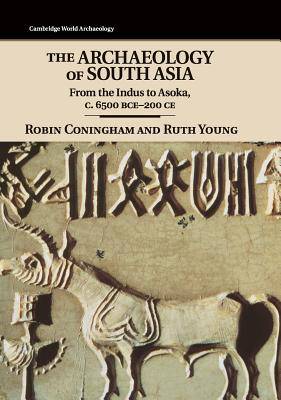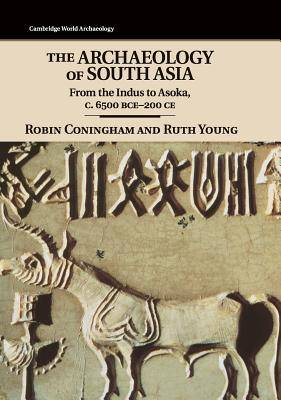
- Afhalen na 1 uur in een winkel met voorraad
- Gratis thuislevering in België vanaf € 30
- Ruim aanbod met 7 miljoen producten
- Afhalen na 1 uur in een winkel met voorraad
- Gratis thuislevering in België vanaf € 30
- Ruim aanbod met 7 miljoen producten
Zoeken
The Archaeology of South Asia
From the Indus to Asoka, c.6500 BCE–200 CE
Robin Coningham, Ruth Young
€ 262,45
+ 524 punten
Uitvoering
Omschrijving
This book offers a critical synthesis of the archaeology of South Asia from the Neolithic period (c. 6500 BCE), when domestication began, to the spread of Buddhism accompanying the Mauryan Emperor Asoka's reign (third century BCE). The authors examine the growth and character of the Indus civilisation, with its town planning, sophisticated drainage systems, vast cities and international trade. They also consider the strong cultural links between the Indus civilisation and the second, later period of South Asian urbanism which began in the first millennium BCE and developed through the early first millennium CE. In addition to examining the evidence for emerging urban complexity, this book gives equal weight to interactions between rural and urban communities across South Asia and considers the critical roles played by rural areas in social and economic development. The authors explore how narratives of continuity and transformation have been formulated in analyses of South Asia's Prehistoric and Early Historic archaeological record.
Specificaties
Betrokkenen
- Auteur(s):
- Uitgeverij:
Inhoud
- Aantal bladzijden:
- 556
- Taal:
- Engels
- Reeks:
Eigenschappen
- Productcode (EAN):
- 9780521846974
- Verschijningsdatum:
- 31/08/2015
- Uitvoering:
- Hardcover
- Formaat:
- Genaaid
- Afmetingen:
- 180 mm x 263 mm
- Gewicht:
- 1329 g

Alleen bij Standaard Boekhandel
+ 524 punten op je klantenkaart van Standaard Boekhandel
Beoordelingen
We publiceren alleen reviews die voldoen aan de voorwaarden voor reviews. Bekijk onze voorwaarden voor reviews.








